![]()
![]()
![]()
Use LEFT and RIGHT arrow keys to navigate between flashcards;
Use UP and DOWN arrow keys to flip the card;
H to show hint;
A reads text to speech;
62 Cards in this Set
- Front
- Back
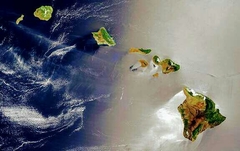
0.0. Hawaiian Islands |
8 major islands (east to west) - Hawai'i (Big Island) - Maui - Kaho'olawe - Lani - Moloka'i - O'ahu - Kauai - Ni'ihau |
|
|
0.0. Hawaiian Monarchs |
Kamehameha Dynasty - Kamehameha I (1795-1819) - Kamehameha II (1819-1824) - Kamehameha III (1825-1854) - Kamehameha IV (1855-1863) - Kamehameha V (1863-1872) - Lunalilo (1873-1874) Kalakaua Dynasty - Kalakaua (1874-1891) - Lili'uokalani (1891-1893) |
|
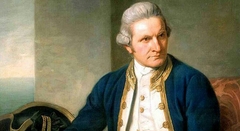
0.0. Captain James Cook |
British discoverer of the Hawaiian Islands, on his 3rd voyage to the Pacific (12 July 1776 – 4 October 1780) |
|
|
0.0. Island Settlement |
Two waves, first from Marquesas & Society Islands (c. 8th cent.), the second from Tahiti (c. 12-13th cent.) |
|
|
0.0. Cook's Ships |
HMS Resolution & HMS Discovery |
|

1.1. Charles Clerke |
Captain of the HMS Discovery; When Cook was killed during his 3rd expedition to the Pacific, Clerke took command but died later in the voyage from tuberculosis. |
|

1.1. Polynesian Triangle |
New Zealand (southwest), Easter Island (southeast), Hawai'i (north) |
|
|
1.1. January 18, 1778 |
First recorded western sighting of the Hawaiian Islands |
|
|
1.1. Sandwich Islands |
Name given to the Hawaiian Archipelago by Captain Cook in honor of his patron at the Admiralty, John Montagu, 4th Earl of Sandwich |
|
|
1.2. Kealakekua Bay |
Bay on the Big Island where Cook harbored after returning to the Islands; where he died |
|
|
1.4. February 14, 1779 |
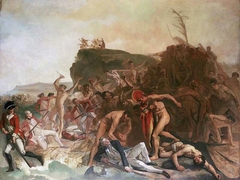
Captain Cook is killed by a mob of natives |
|
|
1.4. February 22, 1779 |
Under command of Captain Clerke, HMS Resolution & Discovery leave Hawai'i |
|
|
1.5. Lono |
One of the principal gods of Hawai'i, associated with fertility, agriculture, rainfall, music and peace; Cook may have been misidentified as Lono |
|
|
1.5. Ku |
Hawaiian god of war, his cult involved human sacrifice; Kamehameha was entrusted as the custodian of Ku by his uncle Kalni'opu'u |
|
|
1.5. Makahiki Season |
From October to February, where a kapu was put on fighting & unnecessary work, in honor of the god Lono |
|
|
2.1. Kalani'opu'u |
King of Hawai'i during Captain Cook's visit; his death led to a civil war resulting in the ascendancy of Kamehameha |
|
|
2.1. Kīwalaʻō |
The son and political heir of Kalni'opu'u, rival of Kamehameha |
|
|
2.1. April, 1782 |
Death of Kalani'opu'u |
|
|
2.1. Keawemauhili |
Kīwalaʻō's uncle and political rival |
|
|
2.1. Keōua |
Brother of Kīwalaʻō |
|
|
2.1. July, 1782 |
Battle of Mokuʻōhai |
|
|
2.1. Battle of Mokuʻōhai |
(July, 1782) rival forces met after the death of Kalani'opu'u to settle land disputes, resulting in the death of his son Kiwalao & established Kamehameha as a major rival on Hawai'i |
|
|
2.1. Kahekili |
Moi of Maui who, by 1786, ruled Oahu, Maui, Lanai, & Molokai |
|
|
2.2. 1785 |
Western ships begin trading for supplies in Hawai'i in between North America's fur-rich west coast and the Chinese port city of Canton |
|
|
2.2. Simon & Thomas Metcalfe |
Father & son American merchants, captain of Eleanora & The Fair American (resp.); Simon's rage in 1790 led to an ambush of the Fair American, resulting in his son's death |
|
|
2.2. Olowalu Massacre |
(January, 1790) After a boat was stolen and one of his men was killed on Maui, Simon Metcalfe invited villagers to row out to the Eleanora under the pretense of trade. He opened fire, killing over a hundred natives |
|
|
2.2. Isaac Davis |
Englishman and lone survivor of the Fair American; advisor to Kamehameha, trained his men how to use western weapons effectively |
|
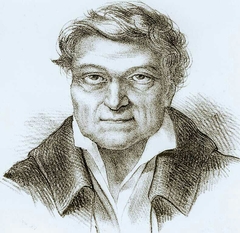
2.2. John Young |
Englishman & boatswain of Metcalfe's Eleanora, he was sent ashore to investigate the disappearance of the Fair American. He was captured & when he didn't return Metcalfe sailed without him. Along with Davis, Young served as an advisor to Kamehameha |
|
|
2.3. 1790 (4 Major Events) |
1. The Metcalfe affair leads to Davis & Young in Kamehameha's service (Jan) 2. Kamehameha begins excursions on Maui (indecisive) 3. Keoua defeats his uncle Keawemauhili and raids Kamehameha's territories, recalling him from Maui 4. While retreating, Keoua's men are caught in an eruption of Kilauea |
|
|
2.3. Battle of Kepaniwai |
(1790) On Maui's 'Iao Valley, between the forces of Kamehameha & Kalanikupule; indecisive, but one of the deadliest battles in Hawaiian history (Battle of the Dammed Waters) |
|
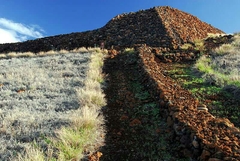
2.3. Puʻukoholā Heiau |
A state temple built for Ku, Kamehameha's war god, in preparation for his conquest of the Island. Keoua was it's christening sacrifice |
|
|
2.3. Battle of Kawaihae |
(1792) Keoua, lured to his fate by invitation of Kamehameha to his newly built heiau, is defeated and Kamehameha claims full control of Hawai'i |
|
|
2.3. Kepuwahaulaula |
"The Battle of the Red Mouthed Gun," fought between Kamehameha and Kahekili's naval forces. First naval battle in Hawaiian history using western weapons |
|
|
2.4. William Brown |
English merchant captain who discovered Pearl Harbor, 1792-93, which he named "Fair Haven"; allied with Kalanikupule against his uncle, he was betrayed by the former and murdered |
|
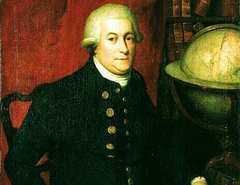
2.4. George Vancouver |
Sailed with Captain Cook, returned to Hawai'i under commanded of HMS Discovery in 1794, convinced Kamehameha to put his domains under the protection of the British crown; introduced cattle & sheep to the Islands |
|
|
2.4. February, 1794 |
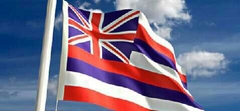
In talks with Captain George Vancouver, Kamehameha "ceded" Hawai'i to Great Britain |
|
|
2.4. July, 1794 |
Kahekili, moi of Maui, dies dividing his domains between his son Kalanikupule (Oahu) and his half brother Kaeokulani (Kauai, Maui, Lanai, Molokai) |
|
|
2.4. Kalanikupule |
Son of Kahekili and his successor on Oahu, wrested control of Maui & its dependencies from his uncle in December 1794 with the help of western ships; defeated by Kamehameha at Nu'uanu |
|
|
2.4. Kaeokulani |
Moi of Kauai & half-brother of Kahekili, he died struggling for supremacy on Oahu against his nephew (Dec. 1794) |
|
|
2.4. December, 1794 |
With the help of western guns, Kalanikupule captures Maui and its dependencies away from his uncle Kaeokulani, who died in battle |
|
|
2.4. Kaiana |
An ally turned rival of Kamehameha, committed adultery with his wife Kaahumanu, and joined with the forces of Kalanikupule. He died at Nu'uanu |
|
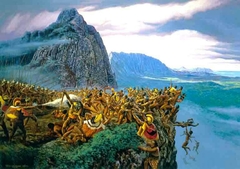
2.4. Battle of Nu'uanu |
(May, 1795) Kamehameha's forces met Kalanikupule's, the latter being defeated, ushering in the era of unification under King Kamehameha |
|
|
2.5. 1796 (2 Events) |
1. A storm in the Kauai channel foils Kamehameha's attempt to capture Kauai 2. Namakeha's Rebellion |
|
|
2.5. Namakeha |
Brother of Kaiana, rebelled against King Kamehameha after his brother's death. He was defeated in September, 1796 |
|
|
2.5. Peleleu Fleet |
Kamehameha's naval force of 800 twin-hulled canoes, capable of transporting several thousand soldiers, prepared for the invasion of Kauai, took 5 years to complete. An 1804 epidemic foiled his plans, and the fleet was never used |
|
|
2.5. 1804 Epidemic |
Probably of cholera or typhoid fever, decimated Kamehameha's army and foiled his plans to invade Kauai |
|
|
2.5. Nathan Winship |
American trader, brokered a peace treaty between Kaumualii & Kamehameha (1810) |
|
|
2.5. Kaumualii |
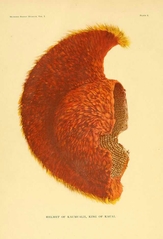
Last independent Moi of Kauai, his peace treaty in 1810 allowed him to govern Kauai as tributary king under Kamehameha |
|
|
2.5. 1810 |
Peace treaty between Kaumualii & Kamehameha brought Kauai under Kamehameha's dominion, with Kaumualii ruling as a tributary king, unifying all the Hawaiian Islands |
|
|
2.6. Kānāwai Māmalahoe |
"Law of the Splintered Paddle" is a precept in Hawaiian law, originating with King Kamehameha I in 1797. The law, "Let every elderly person, woman and child lie by the roadside in safety," is enshrined in the state constitution |
|
|
2.6. Oliver Holmes |
An influential and prosperous American who made his home on Oahu, serving for a time as the Island's governor |
|
|
2.6. Don Francisco de Paula Marin |
Spaniard, influential in the early Kingdom of Hawaii, a confidant of Hawaiian King Kamehameha; a jack-of-all-trades, credited with introducing many agricultural products. |
|
|
2.6. Honolulu |
Harbor city that attracted foreign settlement |
|
|
2.7. Sandalwood |
Known to the natives as iliahi, it was used to make wooden fixtures, and pounded into a perfume for kapa, an early Hawaiian export |
|
|
2.7. The Schäffer Affair |

(1815-1817) Georg Anton Schäffer, a German-born physician in the employ of the Russian-American Company, conspired with Kauai's Kaumualii in a failed attempt to conquer Hawaii for Russia; expelled by American traders & John Young, a significant financial blunder for the Company. |
|
|
2.8. Liholiho |
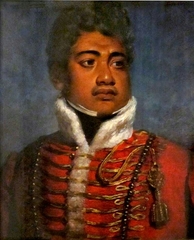
Kamehameha II (r. 1819-1824), son of Keōpūolani |
|
|
2.8. May 8, 1819 |
Death of Kamehameha |
|
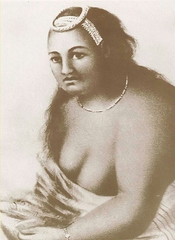
2.8. Kaahumanu |
Kamehameha's favorite wife, declared Kuhina Nui (executive officer) after her husband's death, oversaw the overthrow of kapu and the introduction of Christianity |
|
|
2.8. Kekuaokalani |
Kamehameha's nephew and successor as custodian of the war god; defeated in his rebellion to reject the overthrow of kapu (Dec, 1819) |
|
|
2.8. ʻAi Noa |
"Free Eating," described the overthrow of kapu, begun when Liholiho chose to take food with Kaahumanu & Keopuolani; women were allowed to eat forbidden food and to eat with men; the priests were no longer to offer human sacrifices; the many prohibitions surrounding the high chiefs were relaxed. |
|
|
2.8. Keopuolani |
Kamehameha's wife of highest rank, mother of Liholiho, 'Ai Noa co-conspirator |
|
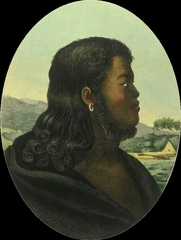
2.8. Kalanimoku |
Also known as, "Billy Pit," Kamehameha's Prime Minister |

